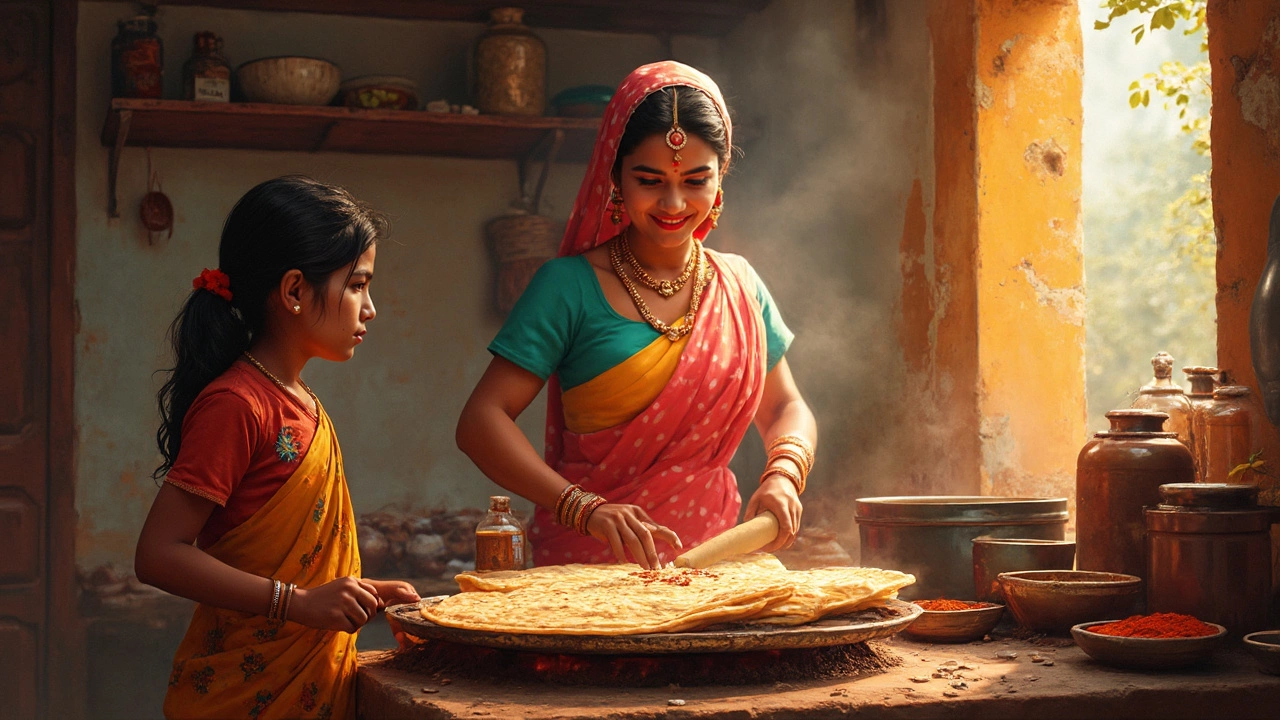Different Cultures Roti: A Global Flatbread Overview
When talking about different cultures roti, the term covers a family of unleavened flatbreads that appear in kitchens from South Asia to the Middle East and beyond. Also known as global flatbread, it reflects how each region tweaks dough, heat, and shaping to create its own signature.
One of the most recognizable members is Roti, a thin Indian flatbread cooked on a hot griddle, often made with whole‑wheat flour and water. Roti requires a balanced dough and a quick, high‑heat cook to puff up. Another close cousin is Chapati, essentially the same as roti but typically rolled a bit thinner and served fresh with curries. Moving west, Naan, a leavened oven‑baked bread that often includes yogurt or milk for softness shows how fermentation and tandoor heat change texture and flavor. These three illustrate the semantic triple: "different cultures roti" encompasses "regional flatbreads" like roti, chapati, and naan.
Beyond the names, the cooking methods link the whole group. Adding a pinch of baking soda or baking powder, as some cooks experiment with, influences the crumb structure, making the bread softer or fluffier. Oil introduced at the right stage of dough development can enhance pliability and keep the final product from drying out. Understanding when to use these leavening agents and fats is key to mastering the craft, and it shows why technique is as important as ingredient choice.
Each flatbread also reflects cultural eating habits. In Indian households, roti and chapati accompany lentils, vegetables, and meats, acting as a utensil. In Persian and Central Asian kitchens, naan often carries toppings like garlic or sesame, turning it into a snack. The common thread is that all these breads serve as a vehicle for flavor, linking them to the broader concept of flatbread culture. Whether you’re a beginner wanting a soft chapati or an experienced cook exploring the smoky depth of tandoor naan, the principles stay the same: good flour, proper hydration, and the right heat.
What to Expect Below
The articles below dive deep into each of these aspects. You’ll find troubleshooting tips for puff‑less roti, experiments with baking soda, oil timing for softer dough, and the science behind leavening agents. Use them as a toolbox to experiment with your own version of different cultures roti and discover which regional twist fits your taste buds best.

Unveiling How Different Cultures Prepare and Enjoy Roti
Roti, a staple in many cultures, reflects diverse culinary traditions through its preparation and consumption methods. From Indian kitchens to Middle Eastern homes, the humble roti varies greatly in style and ingredients. Understanding how to make roti, alongside exploring its nutritional aspects like calories in 1 roti with ghee or sabzi, provides a holistic view of this beloved bread. Whether you're counting calories or curious about cultural eating habits, this guide offers insight into the versatile world of roti.